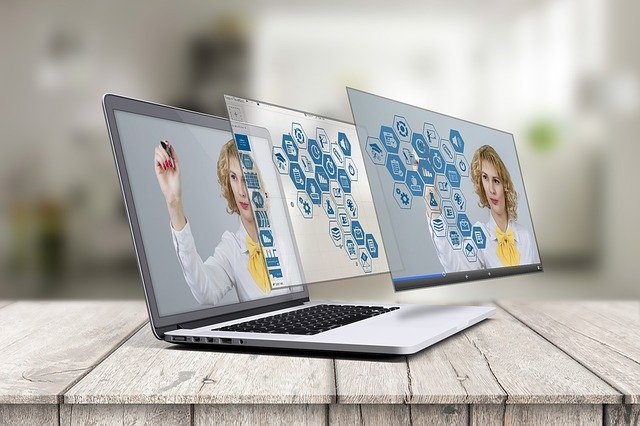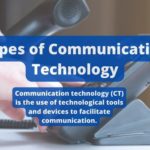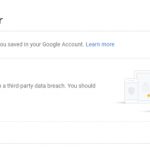When we say educational technology, it refers to using different technological tools for effective learning. It involves using various devices such as machines, networking hardware, and media, as well as underlying theoretical perspectives to apply in education and other learning modes. There are 5 different types of educational technology used nowadays, and we are going to discuss it today.

There are many different types of educational technology, and each has its own unique benefits and drawbacks. Some of the most common types include:
Table of Contents
Synchronous Learning
Synchronous learning is a type of online education in which students and teachers are connected in real-time. This type of learning is often used for classes that require live interaction, such as tutoring or group work. Synchronous learning can be done in person or online, and it often includes tools like video conferencing, chat rooms, and whiteboards.
A synchronous learning environment is one in which all students are participating in the same lesson at the same time. This can be done in person or online. In a synchronous learning environment, there is usually a facilitator who leads the lesson and provides direction to the students.
In this type, virtual classrooms are held via the internet and technological devices such as computers, laptops, cellphones, and tablets.
Benefits:
- Students can get immediate feedback from teachers and classmates
- Can be used for classes that require live interaction, such as tutoring or group work
- Can be done in person or online
Drawbacks:
- Can be expensive, depending on the tools used
- Requires a reliable internet connection
- Students may feel uncomfortable speaking in front of a group or classmates
Asynchronous Learning
Asynchronous learning is a type of educational model that allows students to complete coursework at their own pace. Rather than following a set schedule, asynchronous learners can access material and complete assignments on their own time. This type of learning can be especially beneficial for students who have busy schedules or who want to learn at their own pace. In addition, asynchronous learning can be a great way to connect with other students from around the world.
Through online discussion boards and chat groups, asynchronous learners can interact with classmates and get feedback on their work. Whether you are looking for a flexible learning option or want to connect with others, asynchronous learning might be the right choice for you.
Benefits:
- Students can learn at their own pace
- Can be used for classes that do not require live interaction, such as online courses or self-paced learning
- Can be done in person or online
Drawbacks:
- Students may feel isolated from classmates and teachers
- It may require more discipline than synchronous learning
- Can be time consuming
Blended Learning
Blended learning is a type of educational technology in which students receive part of their instruction in a traditional classroom setting and part of their instruction online. This type of learning is often used for classes that require both hands-on and online learning, such as science labs or history projects. Blended learning can be done in person or online, and it often includes tools like video conferencing, discussion boards, and wikis.
Benefits:
- Combines the best of both worlds: hands-on and online learning
- Can be used for classes that require both hands-on and online learning, such as science labs or history projects
- Can be done in person or online
Drawbacks:
- May be more expensive than traditional learning
- Requires a reliable internet connection
- Teachers may need to be trained in how to use EdTech tools
Linear Learning
Linear Learning technology is a new type of educational software that promises to revolutionize the way students learn. The idea behind Linear Learning is that students can learn more effectively by moving through the material at their own pace.
Unlike traditional educational software, which presents information in a linear fashion, linear learning technology allows students to explore material in any order they choose. This means that they can focus on the concepts that interest them the most and learn at their own pace.
In addition, linear learning technology includes built-in assessment tools that help teachers track student progress and identify areas where additional support may be needed. As a result, linear learning technology has the potential to dramatically improve student outcomes by providing a more personalized and flexible learning experience.
Benefits:
- Students can learn at their own pace
- Can be used for subjects that have a clear beginning, middle, and ends, such as math or science
- Can be done in person or online
Drawbacks:
- May require more discipline than other types of learning
- Can be time consuming
- Students may feel isolated from classmates and teachers
Collaborative Learning
Collaborative learning is a type of instruction in which students work together to complete a task. This type of learning is often used for classes that require teamwork, such as history projects or business presentations. Collaborative learning can be done in person or online, and it often includes tools like discussion boards, wikis, and video conferencing.
Here, the students are being provided with learning materials through sharing information within a network generated by the host or simply the provider or teacher. The network serves as the platform wherein the students will get their materials and exchange academic discussions effectively.
Benefits:
- Can help students learn how to work together
- Can be used for classes that require teamwork, such as history projects or business presentations
- Can be done in person or online
Drawbacks:
- May be more expensive than traditional learning
- Requires a reliable internet connection
- Teachers may need to be trained in how to use EdTech tools
- Students may become distracted by technology
Conclusion
Educational technology has come a long way in the past few years, and there are now many different types of technology that can be used in the classroom. Each type of technology has its own benefits and drawbacks, so it is important to choose the right type of technology for each class.


